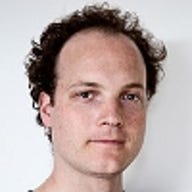Photos: Biometrics up close and personal


Accenture's biometric capture technology is designed to be used in enrollment centres for biometric e-passports and identity cards, according to Accenture biometrics specialist, Cyrill Bataller. A digital camera is used to capture an image of a subjects' irises. The subject had to remove his glasses for the picture of his irises to be captured successfully.
The machine checks the eyeball is alive by measuring minute pupil dilation and contraction in varying lighting. The Home Office plans to introduce biometric identity cards and begin biometric enrollment in the UK by 2008. "Accenture is following the UK ID card debate with interest," said Bataller.
The subject's pupils are recorded and the data is stored for later comparison. The error rate of iris recognition is 0.001 percent, or 1 in 100,000 people with false positive or negative results, according to Bataller. The error rate for ten fingerprints is 0.01 percent and for one fingerprint, 0.1 percent. In contrast, facial recognition software generally has a 5 to 10 percent error rate.
The fingerprint reader did not initially capture an acceptable image. "It works better if you put sweat on your fingers," said Bataller. "Biometrics enable more automation through immigration, as you can be scanned by a machine. If the machine is not able to identify you, then you can be interviewed by a human."
RFID tags can be embedded in passports to enable officials to scan passports from a distance. "You don't have much of a choice over e-passports because of US I-CANN legislation. Everyone will have to have an e-passport — the mandate has come from the US," said Bataller. Robert Mocny, the deputy director of US-VISIT, told ZDNet UK in October that the US Department of Homeland Security wants to "biometrify [sic] a good proportion of the world".
This biometric reader scans and checks the vein patterns in the back of a hand, and can be used to verify credit card transactions. A secondary layer of security can check pulse, moisture, and depth of field so a picture or model of a subject's veins could not be used.